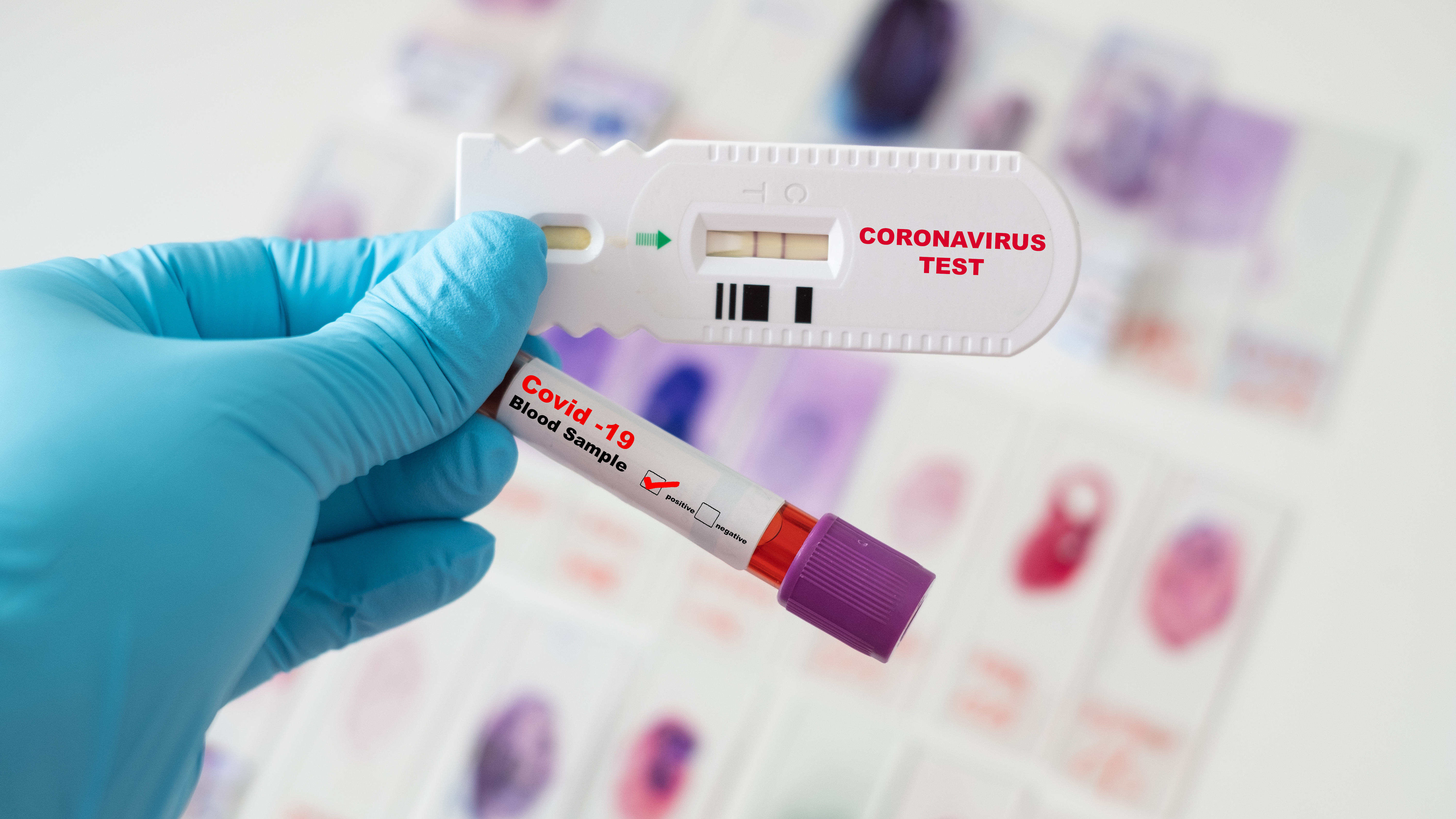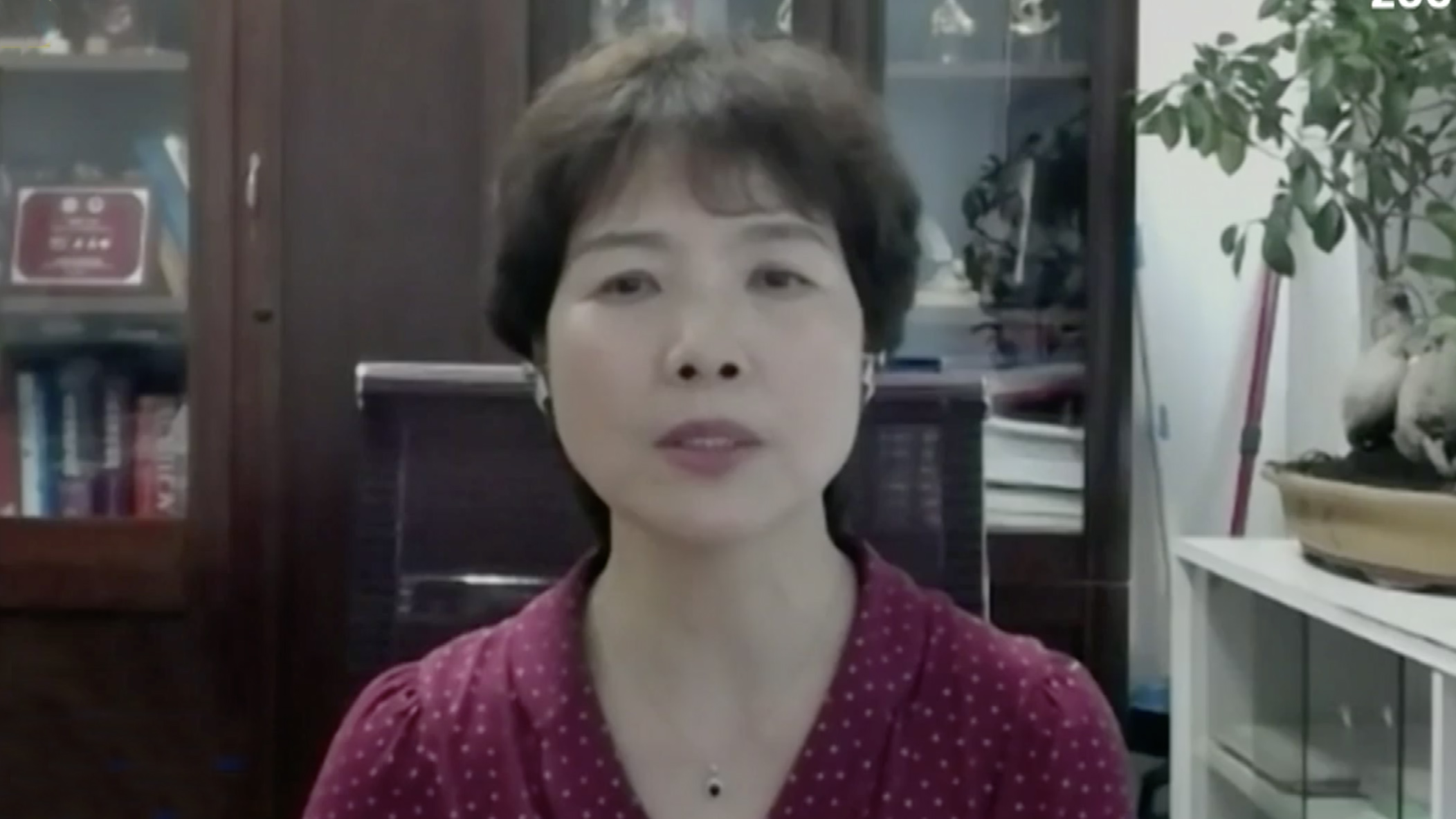01:00

As the COVID-19 pandemic continues to ravage countries around the world, can politics be put aside? In early June, U.S. Congressman Michael McCaul, the top Republican on the House Foreign Affairs Committee, who was assigned to lead the new "China Task Force" in May, released an interim report titled "The Origins of the COVID-19 Global Pandemic, including the roles of the Chinese Communist Party and the World Health Organization." It essentially accuses the Chinese government, along with the World Health Organization, of covering up the pandemic at the early stage and 'obfuscating data.
In this regard, the Wuhan Institute of Virology (WIV) has been at the forefront. The institute has been key to sequencing the COVID-19 genome and its scientists are now working to track the source and develop a vaccine. Despite this institute's best efforts, it has been wrongfully targeted by rumors. Earlier, CGTN's Liu Xin spoke to virologist Shi Zhengli from this lab, whose vital work has earned her the nickname "Bat Woman." Can she set the record straight?
Liu Xin: So according to this report, the WIV confirmed the genome sequence of the virus by January 2, but you waited till January the 12, around January the 12th to make public that information or to share that information with the public and with the rest of the world. Exactly what happened around January 2?
Shi Zhengli: It is true that our team first received the sample of an unidentified pneumonia on December 30, 2019. Later, we detected a type of novel coronavirus on December 31, and the full genome sequence of the virus was determined on January 2, 2020. However, we only had a preliminary drafted outline of this sequence, meaning that more work needed to be done before we could determine the accurate sequence of the virus, such as some final checks and supplementing some missing sequences.
Therefore, we could not release the genome sequence immediately after it was detected. We had to make sure the sequence was more accurate before we could release it to the international community. In addition, when we identify the cause of a disease, the genome sequence of the virus alone is not enough. We needed to isolate the virus, test it on animals, and check the epidemiological data. So, it would take us some time to finally identify the cause of the disease, and we released the sequence prior to the identification of the novel coronavirus as the cause of the pneumonia.
Liu Xin: Could you help us understand the exact date, for instance, when you confirmed the full genome sequence of this virus and the date when the China CDC, because they were also involved in similar work, and then you released it to the world. Could you give us the timeline?
Shi Zhengli: After completing the sequence on January 2 and conducting a further verification in our lab, we had to conduct other experiments to complete working on the missing sequences. Meanwhile, by following unified co-ordination, along with our own facility, two other labs in China were working on this simultaneously. As a matter of rigor, we needed all three labs to run a check on the sequence to determine which strain will eventually be reported to the WHO. On January 11, 2020, we, the China CDC, and the Institute of Pathogen Biology under the Chinese Academy of Medical Sciences compared our sequences and decided on the most accurate result before submitting it to the WHO on January 12, Beijing time.
Liu Xin: I saw a report by Xinhua (China's official news agency) published in January this year, which says that on January 5, the WIV isolated the virus strain of SARS-CoV-2. Is that information accurate? And what's the relationship between confirming the genome sequence of the virus and isolating the strain of the virus?
Shi Zhengli: The sequence is the genetic information of the virus. In order to continue our research, we needed to obtain a living sample by isolating the virus. Therefore it is not enough just to know the sequence of a virus. Sequencing is like arranging building blocks, where four different blocks are sorted into distinct orders to form a genetic background. And the virus is an actual living organism.
Liu Xin: So how long does it normally take to do the genome sequencing, and then to complete the isolation of the virus strain, and then to do the animal testing? Normally, how long would that take?
Shi Zhengli: We were able to complete the whole genome sequence within 48 hours and isolate the virus in five days. So this is the shortest possible time needed.
The isolation of the pathogenic virus was done on January 5, and it came after the whole genome sequence of the virus was determined.
The whole genome sequence only told us the genetic information of the virus. But we still didn't know its basic biological characteristics. So this would require us to perform an isolation of the virus and subsequent animal infection experiments before we could determine if it was a definitive pathogen that caused the pneumonia.
Liu Xin: So there was an article, which was included by the McCaul report, published by Scientific American. The article is called "How China's'Bat Woman'Hunted Down Viruses from SARS to the New Coronavirus" and there is a very vivid paragraph, which described you scrambling through your file from work to make sure that none of your research work over the past with the SARS virus had leaked or had accidentally been released to cause COVID-19. And then after you realized that nothing went wrong, you gave a big sigh of relief. Did you give that interview? Was this information accurate?
Shi Zhengli: Yes, I was interviewed by a journalist. Indeed, after we received the samples from a hospital on December 30, 2019, we ran a test on the virus, using the nucleic acid test method for coronaviruses, including SARS-related coronaviruses. We first found that five of the samples tested positive for SARS-related coronavirus, but we did not have the genetic sequence yet. I was very surprised because our team has been engaging in coronavirus research for a long time.
With a scientific and responsible attitude, I checked our laboratory's research on bat coronaviruses, first. Then at noon on December 31, we got the partial genetic sequence of the virus. After comparing the sequence of this virus with the published and unpublished virus sequences in our lab, we concluded that this was a novel coronavirus. That was when I confirmed that it was a newly discovered virus and had nothing to do with a lab leak or anything else.
Liu Xin: But this article was also used to show that maybe perhaps you had not much confidence in the safety of the lab. How do you react to that?
Shi Zhengli: I think it is very inappropriate to use my genuine and responsible commitment as a reason to attack me. It is also an irresponsible act that goes against scientific common sense and misleads the public. As a scientist, and someone who has been doing research on coronaviruses, when I find a pathogen of this kind in the city, it is natural that I need to rule out the risks of a lab leak. That is a responsible scientific attitude. Even though I have full confidence in the safety of my lab, we still need to rule out this risk, because it is part of tracing the origin of the virus. My first reaction was to check my lab to see if there was a problem. But that didn't mean I had no confidence in the lab's operation. It was only out of responsibility.
Liu Xin: So there is a certain however probability or possibility that a virus could escape by accident. How high is that probability for the Wuhan Institute of Virology?
Shi Zhengli: The WIV has one P4 lab and two P3 labs, and we have been running one of our P3 labs for 10 years and the P4 lab for two years. This whole time we have been running our virus labs, we have never had any leakage of pathogens or people being infected. This is a fact that should be known.
01:50

Liu Xin: The report actually went further and said that the lab has been taken over by the Chinese military. It says that Major General Chen Wei has succeeded Yuan Zhiming as the Director of the WIV and Chen Wei is a Chinese military medical sciences expert.
Shi Zhengli: This is a rumor; there is no such thing.
Liu Xin: You absolutely deny that the Chinese military has taken over the WIV.
Shi Zhengli: Yes, it is a rumor.
Liu Xin: And the WIV has always been under the management of the Chinese Academy of Sciences?
Shi Zhengli: Yes.
Liu Xin: It is either directly accused or implied that there is a certain probability even possibility that the virus might have been released or accidentally escaped from this Wuhan Institute of Virology. How do you verify your claim that these were not the case?
Shi Zhengli: We can never prove something that doesn't exist; no one can prove something that does not exist. All these attacks on us from the U.S. are unfounded, as we never had this novel coronavirus in our lab, let alone handle it. Before December 30, 2019, such a virus did not exist in our lab, so there could not possibly have been a lab leak. Another piece of evidence that I can give you is that our lab has been doing research for 15 years, and all our work has been published. We also have a library of our own genetic sequences, and we have experimental records of all our work related to the virus, which are accessible for people to check.
Liu Xin: However, U.S. politicians, for instance President Trump has said that he has seen credible evidence that the virus might have escaped from the lab and U.S. Secretary of State, Pompeo has also said that he has a significant amount of evidence that the virus came from this lab. How do you see this?
Shi Zhengli: There is no evidence for what they've said. They are lying. They are lying for political reasons.
Liu Xin: How has this kind of political atmosphere impacted your work since the outbreak of the epidemic?
Shi Zhengli: It's extremely difficult and disheartening for us. As scientists, we are innocent. Our team and the Wuhan Institute of Virology have been victims of rumors and conspiracies, which puts a heavy burden on us. Our staff, and their families as well, have been bearing suspicion and distrust, which is really harmful. But still, we never give in to this pressure or let it affect our work.
Liu Xin: I remember in the early days of the outbreak you sent out a message saying the coronavirus is the revenge of nature on human beings. Do you still stand by that assessment?
Shi Zhengli: I was referring to the constant expansion, urbanization and intensive farming. In fact, we, human beings, have caused damage to the whole ecosystem. The damaged ecosystem makes it possible for a virus that has been living in the wild for a long time to be transmitted to humans. Therefore, it is not the virus attacking us, it is our behavior that causes the constant outbreak of emerging infectious diseases. I stand by what I said.
00:47

Liu Xin: What will be the focus of your next step in the research? Will you be looking for the source of SARS-CoV-2?
Shi Zhengli: I think the priority of our current and future work is to produce an effective vaccine as quickly as possible. In terms of the resurgence of COVID-19, i.e., the second and third waves, I think it is possible. But from the research aspect, we may not know enough about COVID-19. Therefore, we hope we can learn more about the pathogenic biology of the coronavirus, including some pathogeny of disease caused by it, epidemiology, and so on. I think we still have a lot of work to do.
Liu Xin: How do you look at the allegations that China or Chinese scientists have been stealing IP or secrets about vaccine development from U.S. counterparts?
Shi Zhengli: It is sheer nonsense. China's vaccine research is leading the world. We isolated the virus strain all on our own, and the whole research procedure was conducted by the Wuhan Institute of Virology and Wuhan Institute of Biological Products Company. The vaccine is being developed by Academician Chen Wei's team, which has their own IP too. I don't know if there is any evidence at all for the U.S. to claim that we stole their research.
Liu Xin: What specific lessons have you or your team taken from the epidemic, especially the outbreak in Wuhan in the early days?
Shi Zhengli: By looking at the algorithm of the pandemic in general, from the moment when the outbreak first happened, the quintessential key is having scientists specializing in different criteria to work together as one. Also, we should have done more preliminary research in advance. Such cooperation requires many research teams from various backgrounds working together. It will take a lot of time and patience to study and research, to blaze the rockiest trail, to solve the mystery little by little, and in this way, people can calmly confront emerging infectious diseases one after another.
(If you want to contribute and have specific expertise, please contact us at opinions@cgtn.com.)